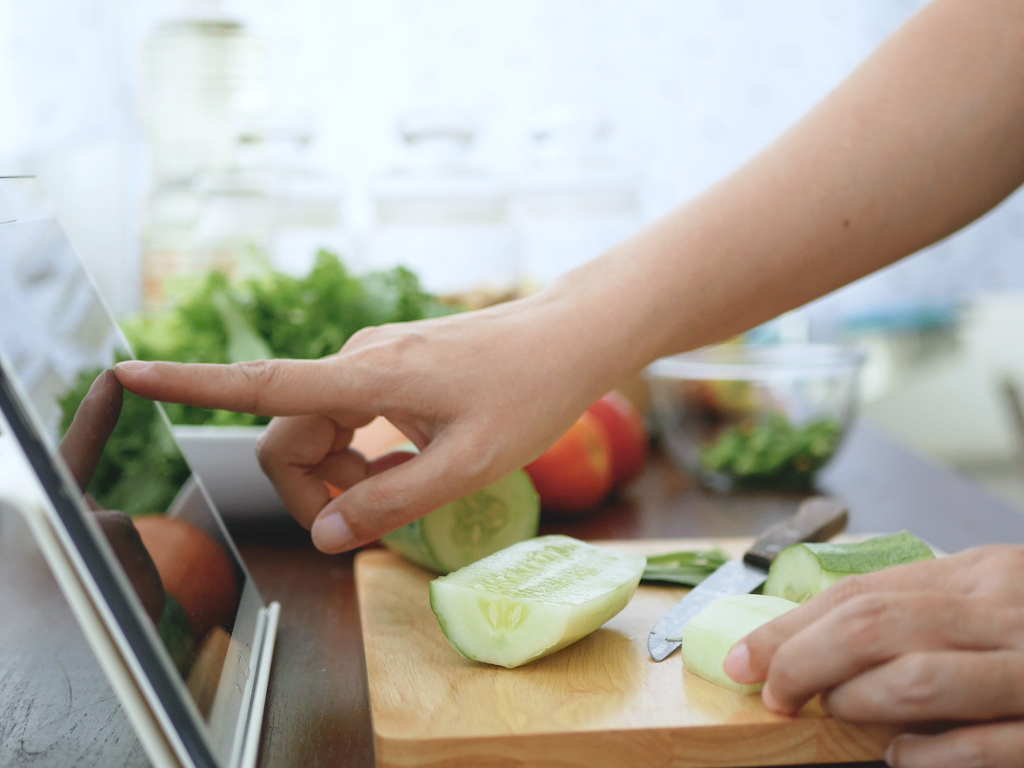It’s now possible to cook global cuisines from the comfort of your own kitchen, as taught by regional cooks from virtually everywhere. Thinking about French macarons, empanadas from Argentina, and chana masala from India? No problem. There are dozens of online classes available, with formats ranging from interactive sessions to live demonstrations to videotaped instruction. Many use the same software we’re already using for virtual meetings and conference calls. And, a surprising number are free or low-cost, although higher-end courses with celebrity chefs are also available.
Here’s how to make the most of an online cooking experience:
Know what you’re signing up for. Interactive sessions are just what they sound like: an opportunity to complete a recipe (or recipes) along with a regional cook. You’ll get an ingredient list in advance. And, groups are usually small (less than 15), so you can ask questions as you go. If it’s a demonstration, you’ll watch as the chef creates the recipe and shares tips and techniques along the way. You may not get the recipe or ingredients until afterward. Some allow you to ask questions throughout, but others are simply listen-only. Videotaped sessions let you cook on your own time, and pause (or speed up) as needed. Recipes may be included in the body of the video or shared after completion.
Be aware of the time zone for the class. If your instructor is in a different time zone, you may need to use a calculator to determine the time in your location. Some sessions could even be held on a different day in another time zone (e.g., a Saturday morning class in India would take place on a Friday night in New York). Calculators can ensure that things like this—as well as daylight savings time—are factored in.
Plan ahead. Interactive classes will generally provide an ingredient list in advance. If you’re limiting your shopping to once every few weeks, leave yourself enough time to acquire the necessary ingredients.
Ask about substitutions. One of the joys of cooking global cuisine is tasting the unique flavors of a particular region or country. But those exotic ingredients may not be available at your local grocer. Also, shortages or limits on staples such as yeast, bread flour, fresh herbs or other items can occur. Once you review the ingredient list, ask about substitutions for any products that are hard to find.
Do your pre-work. Most classes are 1-2 hours in length, so it may be necessary to mix dough, marinade or do other pre-work. Review any instructions well in advance to ensure you’re ready.
Know your metrics. Much of the world is on the metric scale, which means you may need to convert recipes into U.S. standard measurements. Skip the math and invest in a digital scale that makes the conversion process quick and seamless.
Prepare for a fast pace. Once class gets started, you’ll be moving quickly. You can make things easier by assembling your ingredients in advance on your work surface. Peel onions, garlic and other veggies that are typically used without their skins (but don’t chop unless you know for sure how they will be used). Measure and set aside ingredients like salt, flour or lemon juice into separate bowls if you know the quantities in advance. Have saucepans, rolling pins, mixing bowls and other tools within easy reach.
Plan on doing your own dishes. Yep, this is the downside of an online class. Unlike in-person classes, you’re responsible for your own clean-up.
Above all, have fun. There’s no better way to connect with people or other cultures than through food experiences. Embrace the adventure!
In a future blog post, I’ll share some of the on-line classes I’ve taken over the past few weeks.

